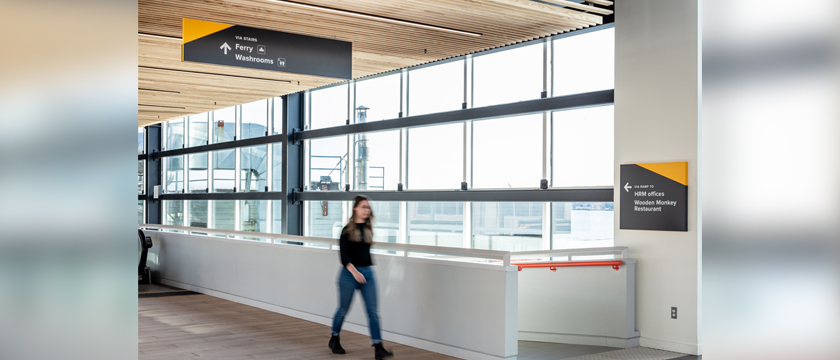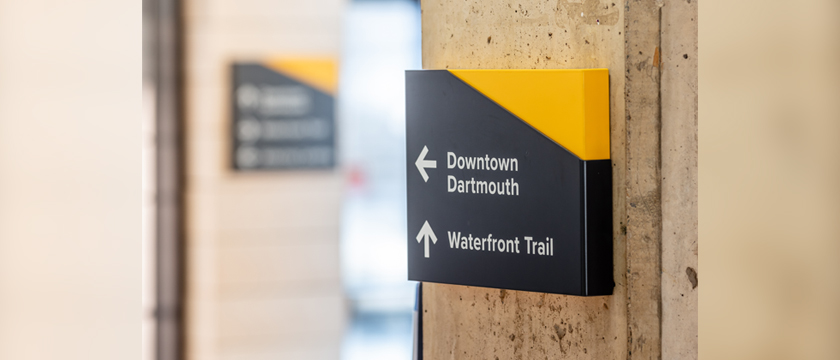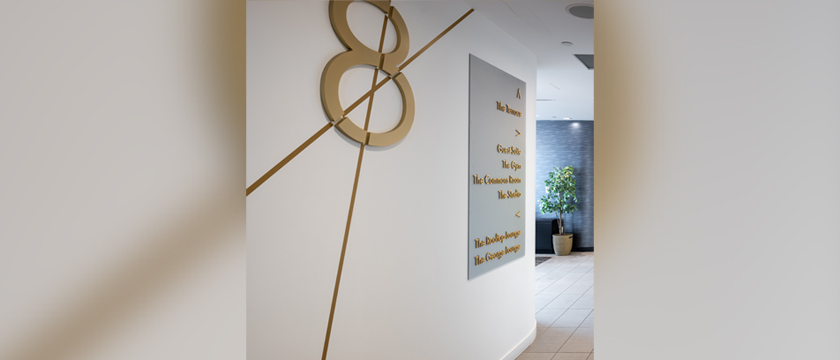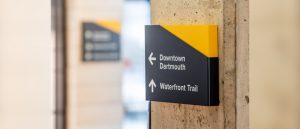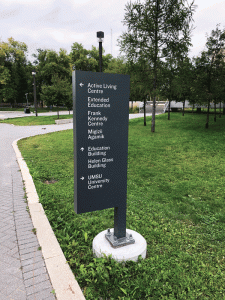
In wayfinding signage, there is a hierarchy of destinations. The ones almost everyone looks for are regarded as primary, while others are secondary. Photo courtesy Fathom Studio
Cost and implementation
The scale of signage projects can be incredibly variable. A small park might have signs in the tens, but building projects may have hundreds of signs, and municipalities thousands. We work with our clients to plan the implementation of signs, working out likely fabrication and installation estimates and planning phased implementation scenarios that respect annual budgets.
Implementation is important, but we often recommend going further to ensure signs are cared for over time. There should be a plan for maintenance, so installed signs are someone’s responsibility. A wayfinding sign that is damaged or missing reflects poorly on the institution who paid for it, as do signs blocked by branches, snow piles, or other issues.
Destinations and nomenclature
We often spend a fair bit of time refining and discussing which destinations we want to include in signs, as they can only direct to a few destinations at a time. Indeed, there is a hierarchy of destinations, with some being primary, and many more secondary. The primary destinations might be ones almost everyone looks for, such as “Registration,” or the washrooms in a hospital. Names have to be short, simple, and generally understood, and sometimes there is a perfectly good generic name that works best. For example, if a municipality has just one library, directing people to the “Library” on signs is often more effective than using its official name. Some wayfinding signs also need to be multilingual, which usually requires more “real estate.”
Conclusion
Wayfinding systems are so much more than sign templates and design drawings. They are meant to be in place for years, as well as added to, edited, and reused again and again. Helping clients weigh key considerations such as context, users, accessibility, durability, cost and implementation, and destinations and nomenclature is important for every sign system, and I hope others in the industry will use them as a guide for their own future projects.
Adam Fine is a planner with a passion for signs. He has helped organizations of all kinds improve their public spaces and rights-of-way with better signage—signs that welcome newcomers, help people find their way in unfamiliar places, tell big stories, and reveal small ones. In concert with his colleagues at Fathom Studio, Fine has worked on interpretive and wayfinding plans for a wide range of clients, including large and small municipalities, trail groups, Parks Canada, provincial parks departments, and university and college campuses across the country.


